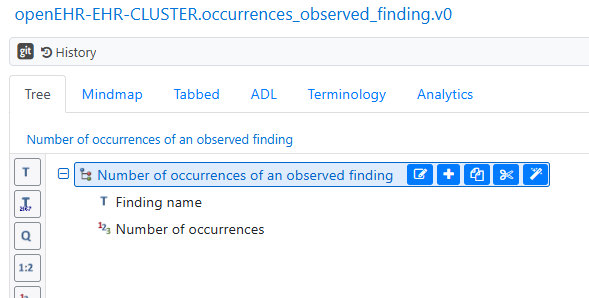Hi,
As part of openEHR work (modelling MRI prostate) at Karolinska University Hospital in Sweden we have designed a new CLUSTER archetype for our need: Number of occurrences of an observed finding. (see the description below). We would now like to get some feedback from the community
Concept name
Number of occurrences of an observed finding
Concept description
Number of occurrences of a finding that was observed during an examination of a specified body structure or region.
Keywords
occurrence, number, count, finding, metastasis, lesion, cyst, polyp, tumour, tumor, mass, nodule, calculus, thrombosus, abnormality, anomaly, foreign body
Purpose
To record the number of occurrences of a finding that was observed during an examination of a specified body structure or region.
Use
Used to record the number of occurrences of a finding that was observed during an examination of a specified body structure or region.
The finding may be
• an anomaly of some type, e.g., a metastasis, a lesion, a cyst or a polyp
• a foreign body
• some other sort of finding
The archetype was designed to document the number of occurrences of a finding that can occur multiple times and is countable. For example (1) the number of metastases that are observed in a brain or (2) the number of lesions that are observed in a prostate during imaging examination.
Misuse
Not to be used to record the sequence number of an observed anomaly. Use openEHR-EHR-CLUSTER.imaging_exam_anomaly.v0 (Imaging examination of an anomaly) for that.
*** Attribute descriptions ***
Finding name 0..1
The name of the finding that was observed during an examination.
Number of occurrences 1..1
Number of occurrences of the finding that was observed during an examination of a specified body structure or region, e.g., number of metastases of the brain or number of lesions in the prostate observed during imaging examination.
